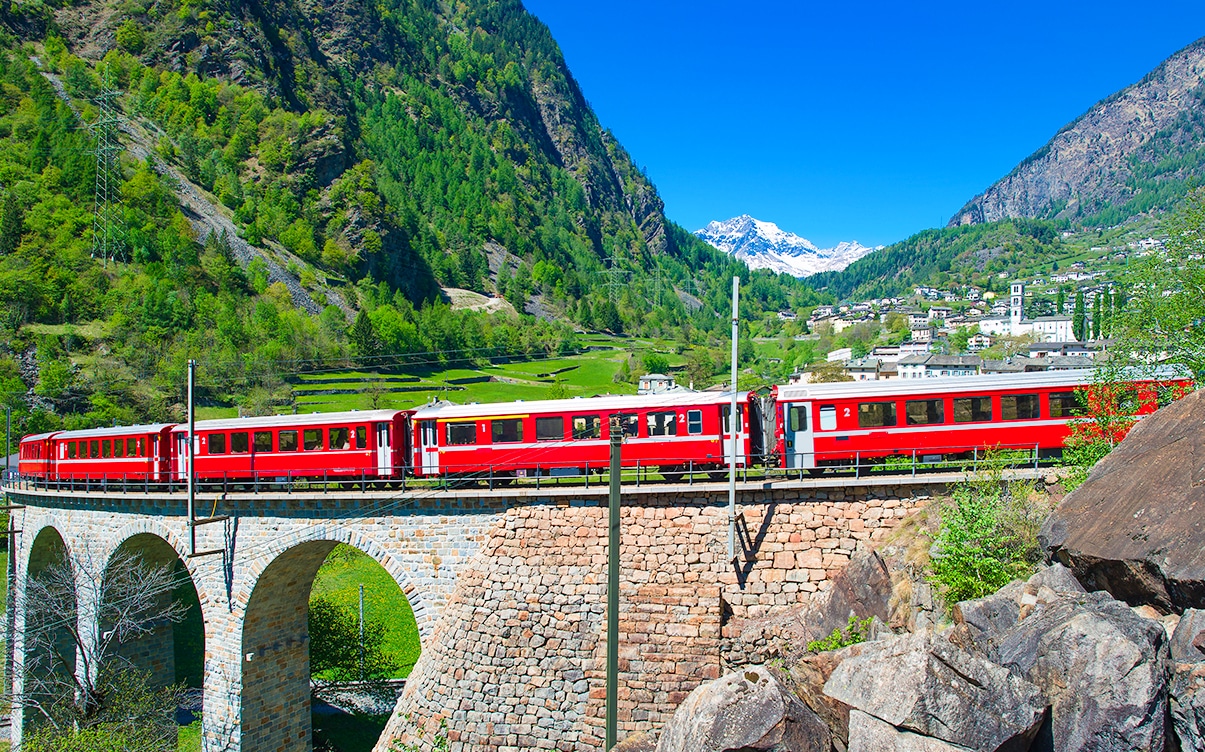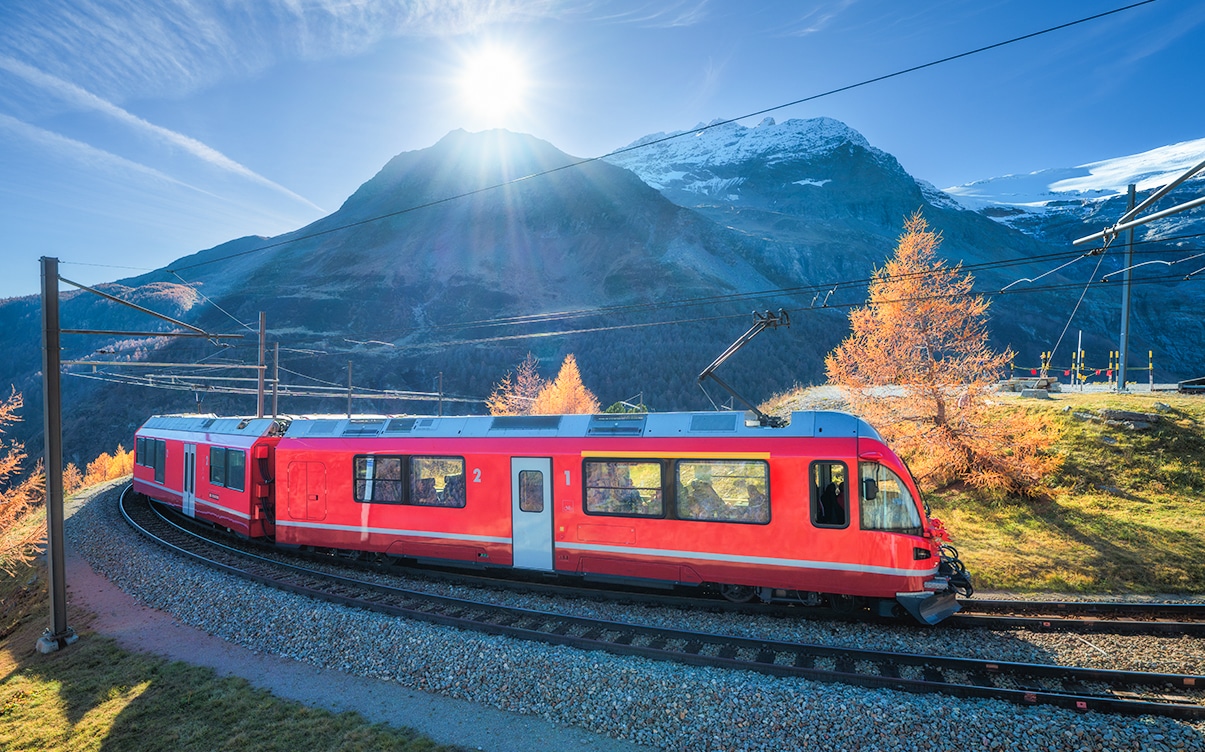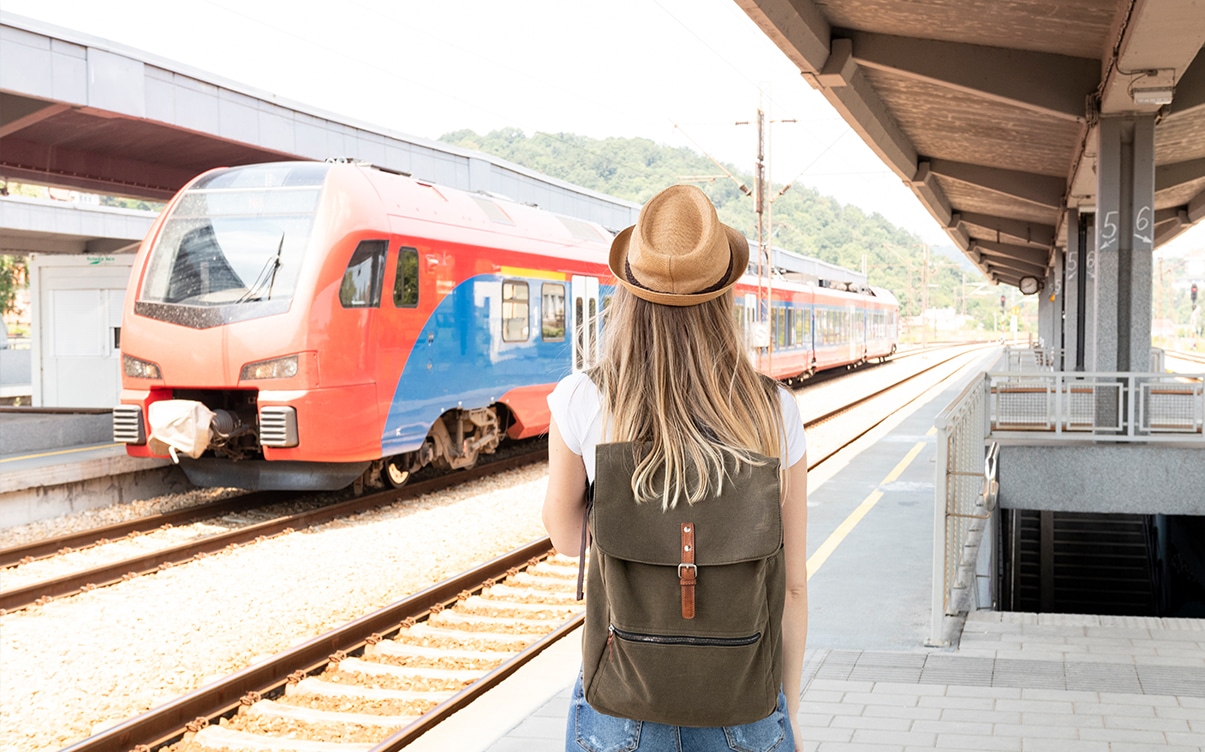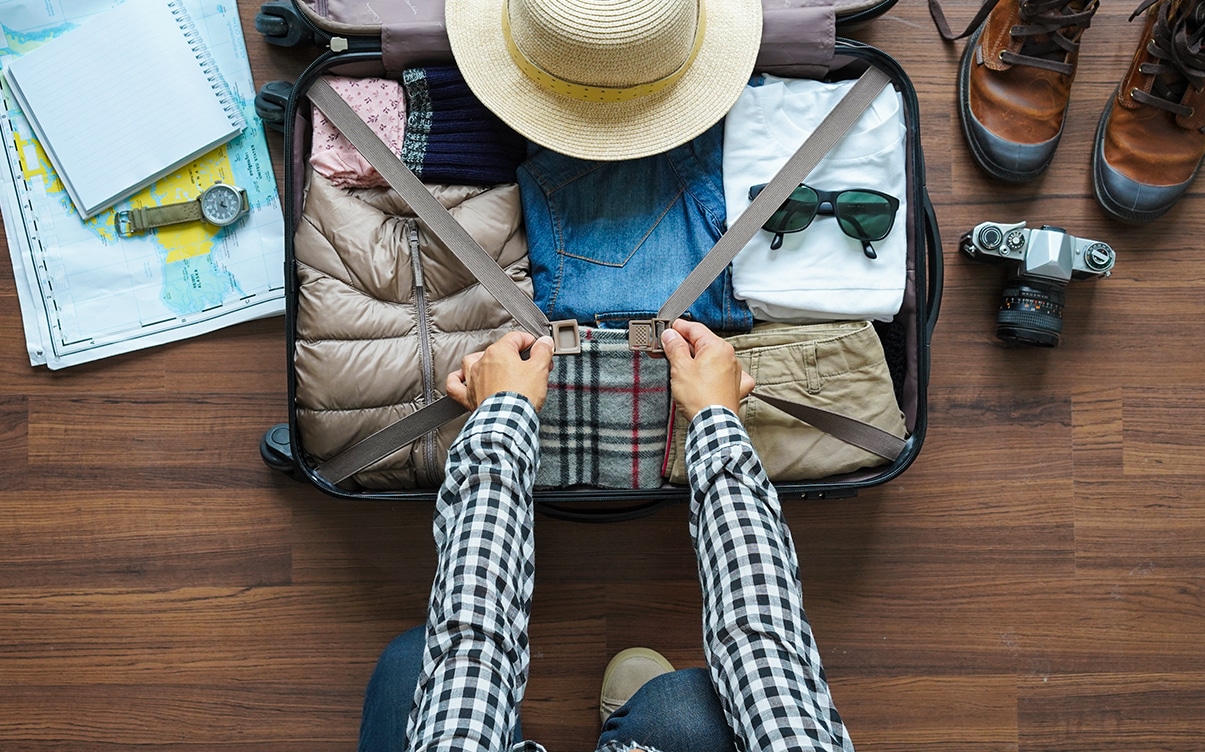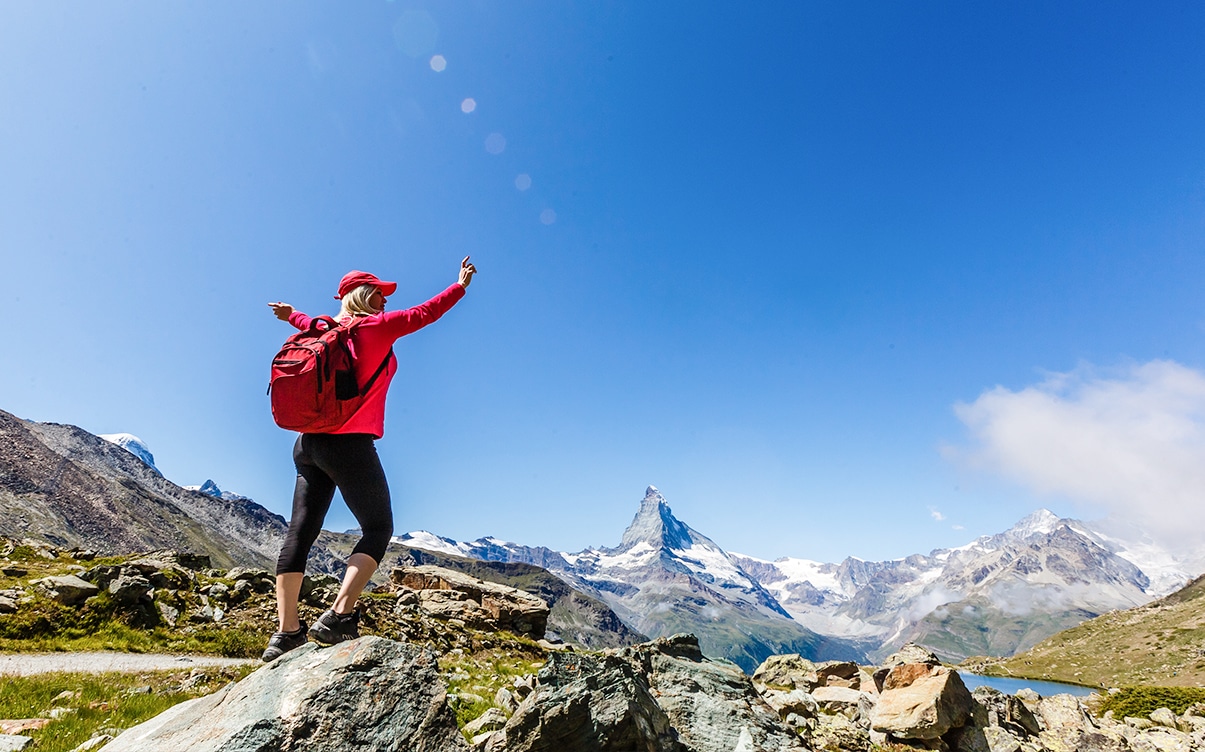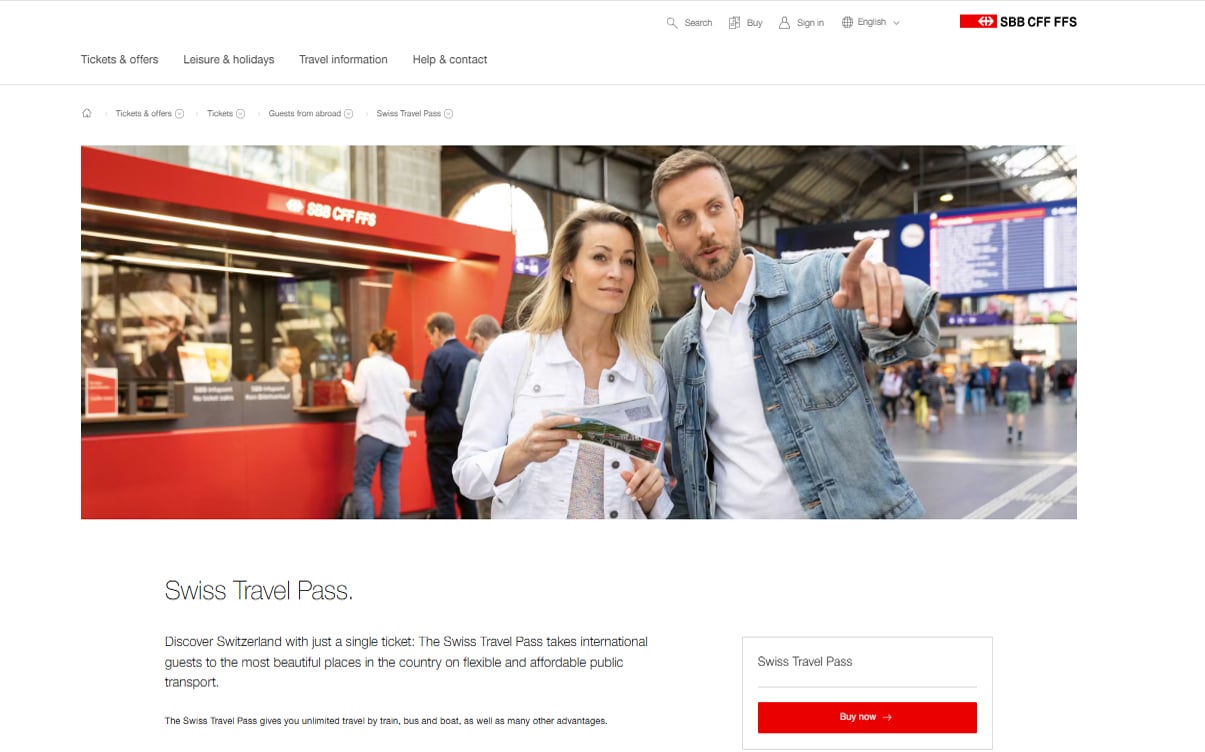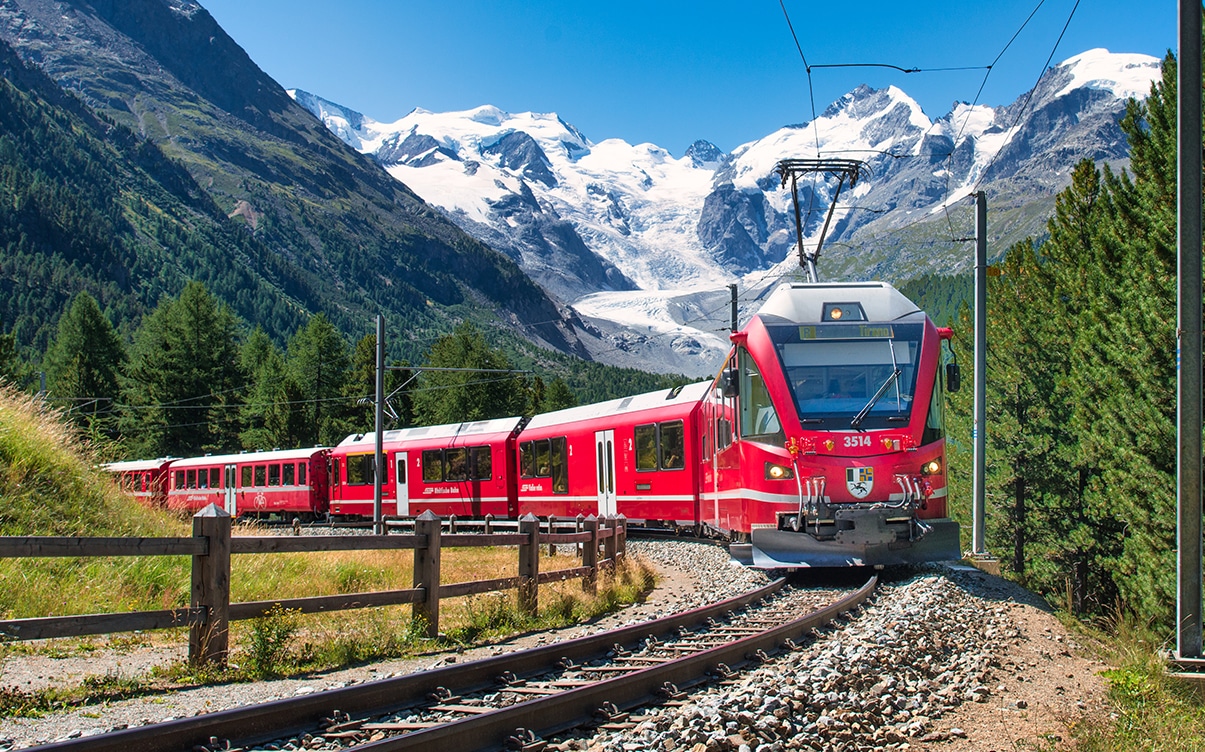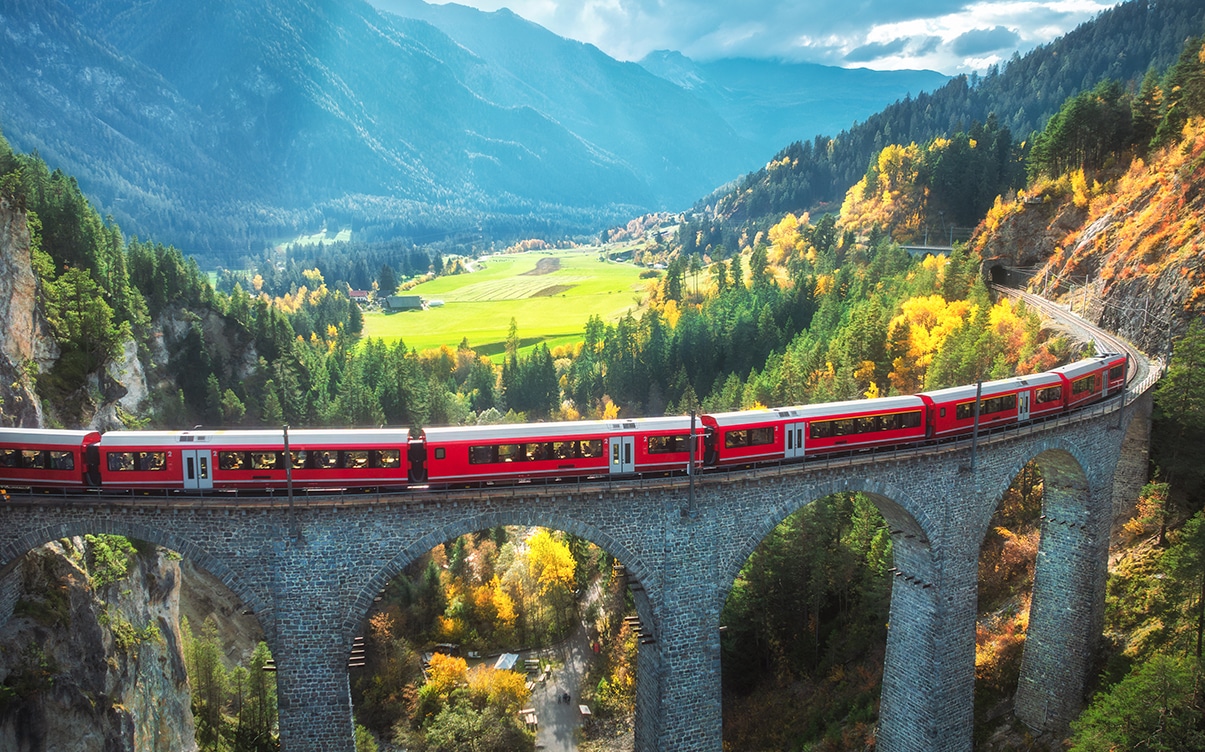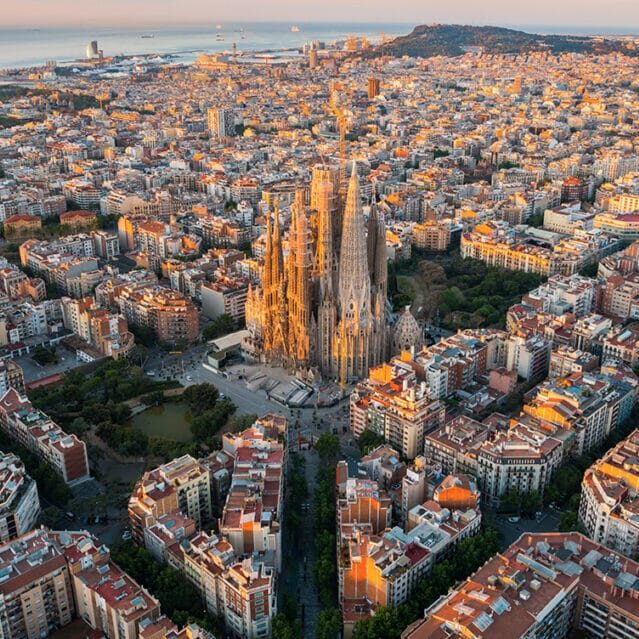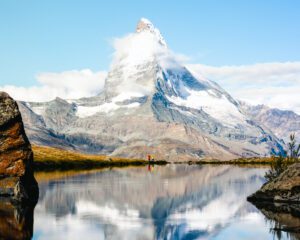Book a Scenic Train Tour Across Switzerland in 2025
Disclaimer: This post may contain affiliate links. Please see our Disclosure Policy and Advertiser Disclosure for details.
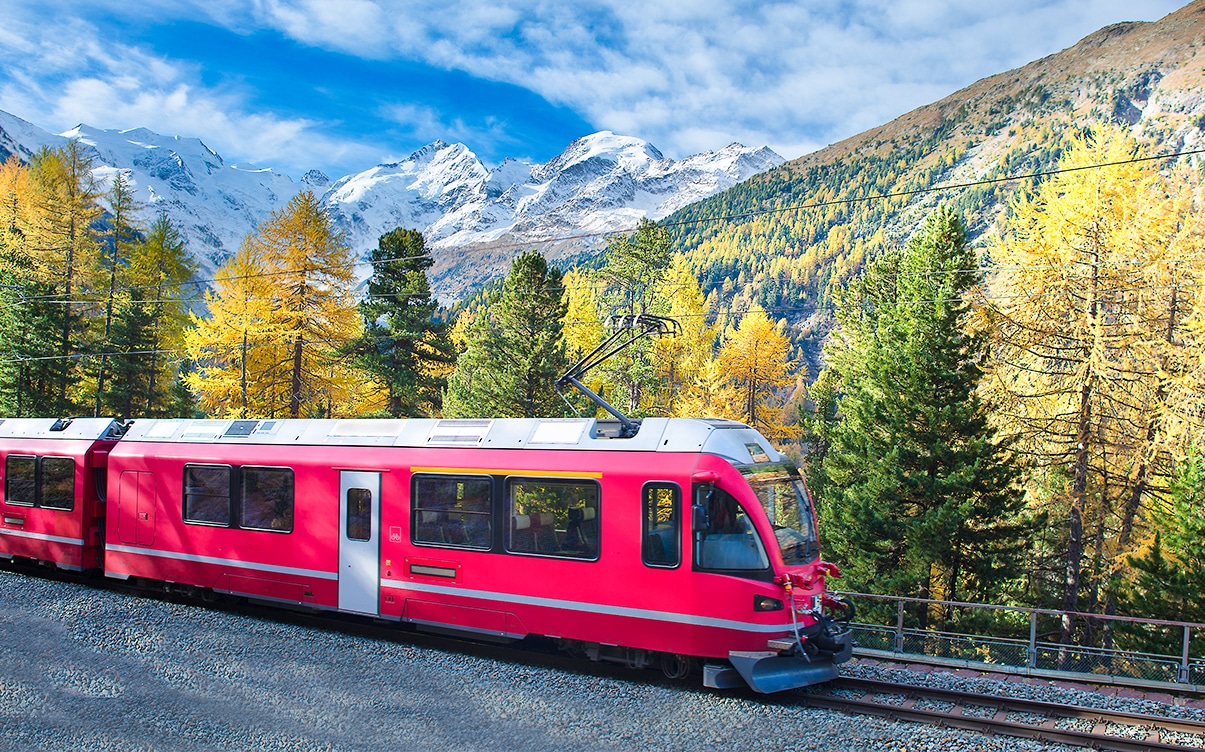
Coming from the United States, many of us don’t often think of rail as a mode of travel. Rail can be used to get around a city, like a subway, and there are a few lines crossing the country, but relatively few people think of it as a way to get anywhere, and fewer still think of it as a mode of leisure transportation. Traveling by rail conjures more images of freighthoppers with bindles than a vacation.
In Europe, though, it’s the complete opposite. Rail infrastructure is generally well-developed, and not only that, it’s comfortable enough to make the centerpiece of a vacation. Take Switzerland, for instance. Switzerland is renowned even in Europe for its robust and dense rail network. From trans-Alp freight to leisure transportation and tourism, the Swiss rail system is incredible. With over 3,200 miles of track, you can see pretty much the entire country from a train.
So, if you want to see what Switzerland has to offer, and you don’t want to rent a car to do it, rail is the way to go. Here’s how to do it!
What to Expect on a Rail Tour of Switzerland
First, let’s do our usual catch-all section for key details and questions you might want answered.
How long will a rail tour of Switzerland take?
It depends on the tour!
There are some shorter tours that are only 2-3 days, but most of the best range from 8 to 12 days. After all, you’re getting to see the best sights around an entire country!
What are the benefits of taking a rail tour of Switzerland?
A lot! Rail can be a fantastic way to get around, and the trains in Switzerland are generally very nice and enjoyable to ride. You’re able to see all sorts of sights, including incredible panoramic views, mountainside landscapes, and much more, without having to plan your routes or pay attention to the road as you drive.
Train tours also help you out a lot by taking a lot of the burden of planning out of your hands. The tours are semi-fixed, so you know what you’re getting, when and where you’ll get it, and you don’t have to deal with the uncertainty of a more self-guided trip.
What kind of tour should you take?
That’s up to you, but they fall into three categories across two different kinds of tours.
First, the two kinds of tours: single-train and multi-train. This is a fairly obvious distinction, right? A single-train tour is one scenic train ride taking you from point A to point B. This is the best option if you have relatively little time to spend on your trip, if you want to be more flexible with your vacation, or if you don’t like any of the multi-train routes and want to plan one yourself.
Multi-train tours are often called “grand tours” and involve multiple routes, multiple stops at different cities along the way, and often extra attractions at each stop. These are incredible and tend to have a lot more included with their packages. They’re great if you have more time to spend or don’t want to get into the weeds with planning.
So, what about those three categories?
- Fully guided. These are tours you book that have a whole itinerary planned out for you. A guide accompanies you, talks to you about the scenery as you pass, and handles much of the organizational duties for you. They’re generally a set schedule, so you don’t have much flexibility, but you get to see pretty much everything you would want to, regardless.
- Semi-guided. These are similar to fully guided tours, except you’re handed the schedule and information and left to your own devices. This is a great option for something like a honeymoon, where a tour guide would feel like a third wheel. You do run the risk of a language barrier with these tours, though.
- Private tours. These are fully customized tours designed just for you and your group. You usually have a private concierge to accompany you and arrange things the way you want. It’s extremely flexible and customized but much more expensive.
And, of course, you can go the full DIY route and skip any sort of guidance whatsoever. We tend to choose this option, but sometimes it’s nice to let someone else do the planning for you, right?
What should you pack for a Swiss train tour?
This is tricky. On the one hand, you want to pack light because you’ll be packing, unpacking, and re-packing constantly over a 1-2-week tour. On the other hand, it’s a long enough trip that you want to have everything you need, right?
Some of what you pack will depend on the specific tour and activities you plan. If most of your activities involve visiting museums and cultural centers, you might not need the same kind of hiking gear and weather apparel as you will if you’re planning mountain hikes. Definitely keep the weather in mind, and don’t forget that up in the mountains, it’s colder and snowier, not to mention windy.
Don’t forget a swimsuit if your trip includes a stop at a mountain spring or spa!
There’s also the usual stuff: toiletries, lotion and sunscreen, prescription drugs if necessary, water bottles, binoculars, baggies, earplugs, a travel pillow, all of your important paperwork for the trip, a good camera if you aren’t just using your phone, power converters, and so on.
Remember, too, that Switzerland isn’t some isolated tropical island or developing nation where anything you don’t bring with you is unlikely to be available. Nearly anything you could want or need will be available at a store in the cities you stop at along the way. So, don’t stress too much about forgetting something when you can buy it if you need it.
What else is worth knowing?
If you take a planned tour, many of them will handle your luggage for you, including from train to hotel, hotel to train, and from train to train. You’re just along for the ride. You’ll have to manage it all yourself if you’re not on a grand tour, though.
Activities can vary, and some of them require a decent level of physical fitness. They aren’t going to surprise you with climbing up into the Alps, but Switzerland is not a flat country, so expect your share of hills.
There are many different kinds of tours available to suit your preferences, so don’t be afraid to pick one that suits your desires.
Yes, there may be a language barrier, though maybe not as much as you might expect. Switzerland has four national languages (Romansh, German, French, and Italian), but English is also widely spoken, so it’s not as bad as it could be.
If you have any other questions we haven’t answered, please let us know in the comments, too!
All About the Swiss Travel Pass
One thing you’ll probably want to know about, especially if you’re doing your own self-guided tour, is the Swiss Travel Pass.
This is a one-purchase pass that gives you:
- Unlimited bus, train, and even boat travel.
- Unlimited travel on premium panorama trains (with reservation).
- Unlimited use of public transportation nearly everywhere in Switzerland.
- Free admission to over 500 different museums across the country.
- Access to mountain excursions, including Rigi, Stoos, and Stanserhorn.
- Discounts of up to 50% for other travel and excursions.
Passes are purchased for a certain length of time; a three-day pass is about $500, while a 15-day pass is about $900. (Note: those prices are as of the time of this writing and based on the CHF-USD exchange rate, which is wildly inconsistent because of geopolitical and economic instability in the US. Pricing may vary down the line.)
Should you buy a Swiss Travel Pass?
If you’re buying one of the expensive, guided, all-encompassing tours, probably not. You’re already paying for just about everything the Travel Pass would cover for you, so it wouldn’t be worth the money.
On the other hand, if you’re putting together a trip of your own and would otherwise need to buy individual rail passes, as well as paying for other transportation, then it’s probably going to be worthwhile. It’s a powerful option, regardless.
How Much Does a Rail Tour of Switzerland Cost?
One of the biggest questions you’re likely to have is about the cost. How much would it cost to take a train tour in Switzerland? The answer is: it depends on the tour, of course.
Some of the best grand tours out there – the ones that take 8-12 days, bring you all around the country, and give you plenty to do along the way – are in the neighborhood of $3,500-$4,000 per person.
While that might sound like a steep cost, remember that’s not the whole story. On one hand, that cost typically includes the train fees, the hotels, admission to many of the things you’d do along the way, and at least some of the food. What they don’t cover is anything before the start or after the end of your tour, like additional hotel stays and your flights in and out of the country.
There are plenty of shorter tours or less-guided tours for cheaper fees, usually around the $1,500 to $2,000 per person range. If you’re planning things out yourself, individual train rides can be anywhere from $500 to $1,000 for a couple of days in a loop or other small tours. You can put together a handful of those for a customized plan, too.
Keep in mind, too, that prices can vary by season. Some train tours are only available at certain times of the year, while others are all year, and prices will be higher during peak season.
What Route Should You Take on a Rail Tour of Switzerland?
This is a question we can’t answer for you because there are too many great tours, and they have different focuses and details that can make them more appealing to some people than others.
There are a bunch of websites for Swiss tourism with lists of trains and routes you can examine, but a few we think are the best include:
- Glacier Express. This is a lengthy route from Zermatt in the southwest to St. Moritz in the east, winding through and along mountains and alongside glaciers. It’s one of the most breathtakingly beautiful train rides in the world, and it’s also one of the most popular tourist routes in Switzerland.
- Bernina Express. This is a relatively short train in the east of the country, with a similar-length bus ride as well. It’s worth mentioning specifically because it’s a tour focused on visiting five different UNESCO World Heritage sites along the way. If history is your thing, it’s a must-do tour.
- GoldenPass Express. This is a route sort of parallel, though some distance away, from the Glacier Express. It’s a little further north and takes you between Montreux and Interlaken, with several stops along the way. It’s also a fairly common route even for local travelers and goes between the two cities four times a day.
There are also grand tours that take one or more of these routes, too. For example, the ” Best of Switzerland by Rail” tour starts you in Montreux, takes you along the GoldenPass Express, then up to Lucerne and to Zurich, down to St. Moritz and to Tirano with the Bernina Express, then from St. Moritz to Zermatt on the Glacier Express, before sending you back up to Montreux. It’s one of the more expensive, but also comprehensive, possible tours available.
Similarly, the Grand Train Tour covers many of the same routes but with a different routing between them and a couple of different trips, including a leg by motorcoach through the edge of Italy.
Regardless of which specific tour you take, there’s going to be a ton of incredible scenery, wonderful food, and great people all along the way. It’s an unforgettable experience, so if you can swing it, give it a go!
You may also enjoy:

